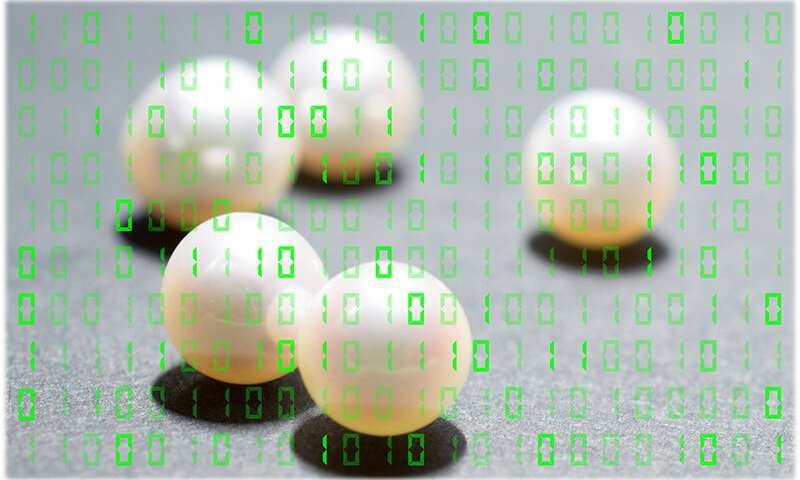Pearls may provide new information processing options for biomedical, military innovations

Lustrous reflection from a pearl offers a concept of hybridizing material and digital properties for spectral information processing. Courtesy: Purdue University/Chris Adam.
Pearls have long been favored as objects of beauty. Now, Purdue University innovators are using the gem to provide potential new opportunities for spectral information processing that can be applied to spectroscopy in biomedical and military applications.
The Purdue team demonstrated light transport-assisted information processing by creating a pearl spectrometer.
Spectrometers probe interactions of matter and light as a function of the electromagnetic spectrum and are commonly used in biomedical and military applications. For example, they have been used for diagnostics of various types of cancer and for military gas sensing.
“Unfortunately, widespread uses and practical adaptions of spectroscopy are often limited due to the need of conventional spectrometers,” said Young Kim, an associate professor of biomedical engineering at Purdue. “The current spectrometers rely on complex device assembly, high-precision alignment and large physical size or dimension, all of which prevent rapid translation into practical applications.”
The work, which was funded by the U.S. Air Force Research Laboratory, is published in Nano Letters.
“We discovered that pearls are an ideal natural object for Anderson localization of light, named after Nobel laureate Philip Anderson, whose concept has been extended to describe how light undergoes on and off resonances inside materials due to their strong scattering,” Kim said.
Yunsang Kwak, a postdoctoral fellow in the lab at Purdue, said, “Anderson light localization offers high randomness that is extremely helpful for compressive sensing, in particular to conduct information processing with a thin and plat form factor, by simply attaching a pearl-like multispectral filter array on a conventional camera.”
Kim said, “We do not think that the direct use of a pearl would be a good option for mass production of multispectral filter arrays. Instead, pearls teach us how to design disordered nanostructures of Anderson light localization to develop a new class of spectral information processing machine.”
The Purdue researchers are looking to their new discovery to provide scientists with an idea of hybridizing material and digital properties, which could be useful for innovations in biomedical and defense applications.




































